Button. 100 years long story
Since we started to analyze the history of the emergence of different parts of modern web interfaces, it would be nice to talk about the button. And how over the past 100 years, changing the user's thinking of people in relation to buttons.
In other words, today we will talk about how we came from this - to this:

')
We will also talk about how buttons have changed our understanding of this world. You have no idea how strong this influence was: the buttons changed the very paradigm of our thinking.
You got out of the car, put it on the alarm, sent sms on the way. They dialed the number of their apartment on the intercom, went into the elevator, went up to their floor, went home. Lit the lights in the hallway, got to the kitchen, put the kettle on to boil, turned on the computer. All this took you 1 minute. You have pressed a variety of buttons at least 10 times.
Buttons give us the ability to simply run complex processes. In one thesis on philosophy, there was a downright frightening definition:

You and I live in an era of total transition from the relief "push-button" era to the era of "surfaces." Everything becomes flat, sensitive to touch, appealing to intuition, accumulated experience of communication with button interfaces. To that same user experience ( User Experience , aka UX).

But the button era also had a predecessor era. Let's call it the "era of leverage." Consider the past - to better understand the present.
Humanity is essentially a herd of intelligent primates. We have always used the objects of the world to enhance with their own capabilities. So the bone turned into a shovel, a stick into a rake, and steel into mechanisms.

For example, a pistol can be simply described as a mechanism that at the touch of a button throws a small “stone” with high speed and accuracy. And throws out much more efficiently than if a man were thrown by hand ammunition. The piano keys are nothing more than buttons that trigger hammers on the strings.
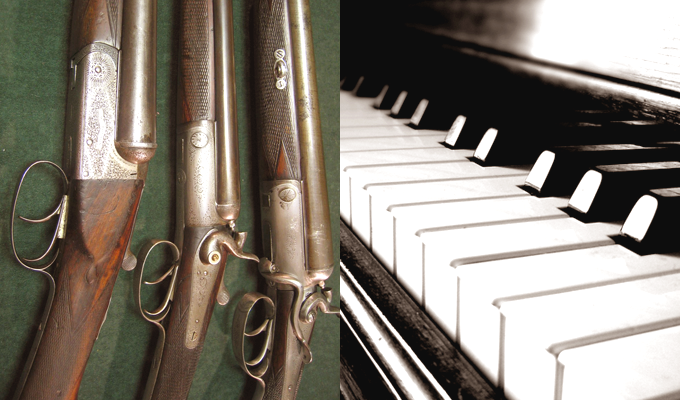
The peculiarity of the mechanical epoch was that one could see the entire sequence of interactions: how one process starts the second, enhancing the original action, and so on, from initiation to the final result.
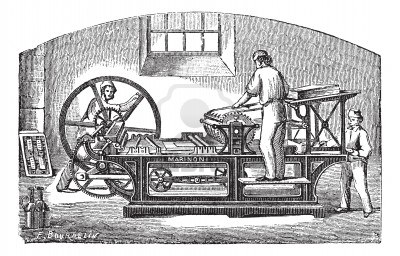
What really changed these technologies was how we began to perceive the world. Reality has ceased to be perceived as something static - with the advent of the technologies of the mechanical age, humanity has gained power over time and distance.

Before we talked about the lever. The lever carries the meaning of amplification: if at the beginning of the “chain” a person pushes the lever, then at the end of this chain there is a push — reinforced by gears, belts, blocks and other mechanisms. In the case of the button, everything is different: at the beginning of the chain, a slight pressure occurs, at the end - whatever.
A simple example with a light bulb: you press a switch, but pressing does not increase the brightness of the light, as if it happened with the logic of the lever mechanism. The technology of abstract interaction has opened a new way of understanding the world. Abstraction is a feature of the next-gen era.
What was the first button? This is a button on a flashlight - it was this device that brought the button into everyday life and along the way made a revolution in people's understanding of electric light. 1899th year.
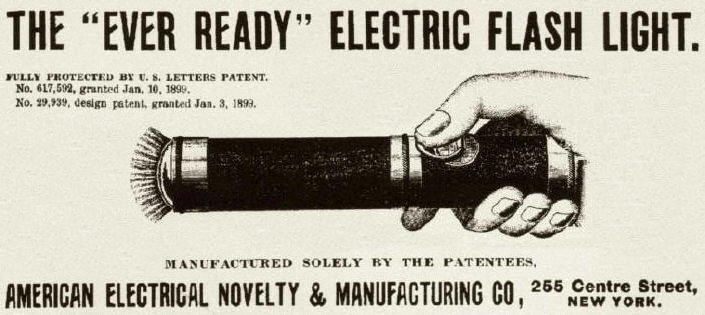
George Eastman of Kodak contributed to the introduction of cameras into the lives of ordinary people. The slogan of the camera was the unforgettable "You press a button, we do the rest." Thus, the word “button” was equated with the word “simplicity”.

It was at the beginning of the twentieth century (namely, in 1900, the year) push-button doorbells ousted their rope counterparts. With the spread of electricity in 1910, push-button switches began to appear in homes. Cartoons of the gloomy world of the future appear in newspapers: a lazy man sits in a chair surrounded by buttons for all occasions. Well, according to the then ideas about the future, of course.
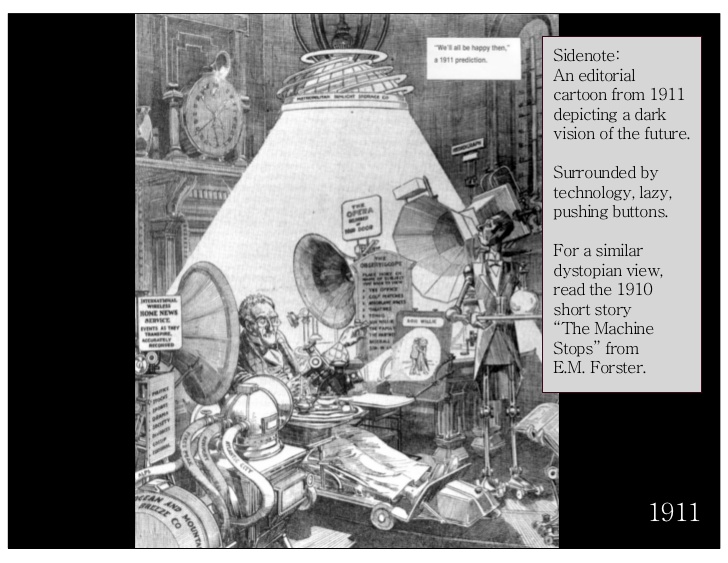
Link to the video mentioned on the slide . He is still sci-fi
The next revolutionary technical novelty was radio (1920). By 1938, 30 million radio receivers were sold (attention). It was a real “Internet boom” of the beginning of the last century.
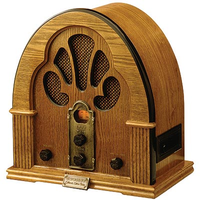
But to tune in to your favorite radio station, the average person had to be “a little bit learned”. That was until 1938, when the buttons first appeared on the radio. This was the first in the history of the “save” use case. You could save the found station to a button and then call it with a single click.
In the years of the world economic crisis (1939), people dreamed of a better life. The 1940 film Leave it to Roll-Oh perfectly illustrates the concept of an imaginary future with its attribute: a domestic servant robot (who can even fix the stove!). You can control the robot using the keypad.
The thought of the future does not stand still; in 1957 Monsanto House of the Future opens in Disneyland, stuffed with automation, plastic and, of course, buttons!
But not only futurists dreamed of buttons. Marketing also did not sleep.
In the fifties, push-button technology spread to many consumer goods, including a new luxury item for the middle class — the automobile. The phrase “pushbutton” has become an adjective, standing in the same row with words such as “modern”, “luxurious”, “advanced”, “new”, “simple”, etc.
Everything that started from the button automatically acquired the status of "premium". Here, for example, an oven, a washing machine and a canned food opener - for hostesses of the same era:

Before the buttons there was a technological gulf between the then “geeks” and ordinary people. Now everyone could use any complicated device - after all, it only needed to press a button.

The first remote control also appeared in the “push-button” era, in 1956. People can control technology from a distance and without wires!
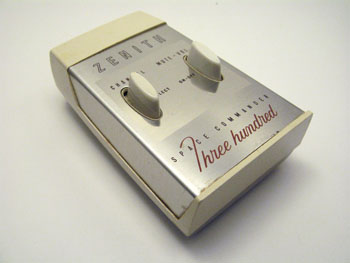
But associations with the future and luxury are not all.
After the Second World War, the arms race began. The threat of nuclear annihilation seemed just as easy as pressing a little. Remember the catch phrase from the BBC: "Who has the finger on the nuclear button?".
The famous film of 1951, teaching children safety in a nuclear explosion - "Duck and Cover"
At the same time, engineers built complex computers of impressive size, with rows of buttons. Only a few specialists could work with such machines using a special professional language.
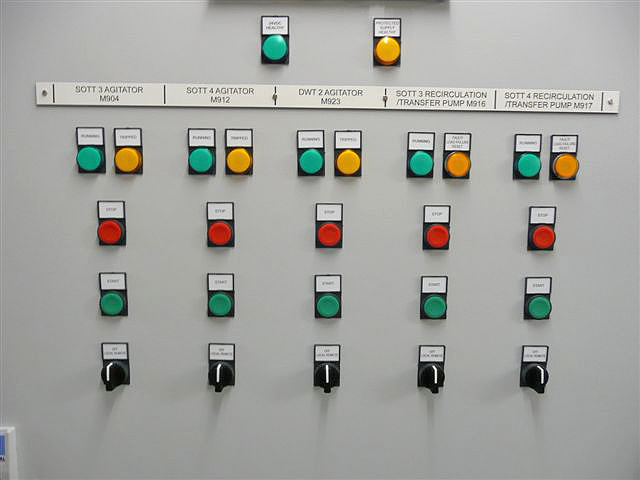
And the flip side: pressing the wrong button causes chaos, disaster.
But the button gradually acquires other characters.
The Humpty Dumpty (1947) slot pinball machine is the first toy to use flippers, shovels toss a ball. For the first time, a player could interact with the ball and its environment using a complex mechanism. The control tool was, as you understand, all the same buttons.

So began a new history of games. In 1977 there was a second revolution in Igromir - with the advent of the Atari prefix. And, of course, the first push-button joystick - icons of a whole generation. Games came to the house.

The boom of arcades came in the 1970s. Gradually, the ability to deftly handle buttons became a valuable skill that spawned an entire industry:
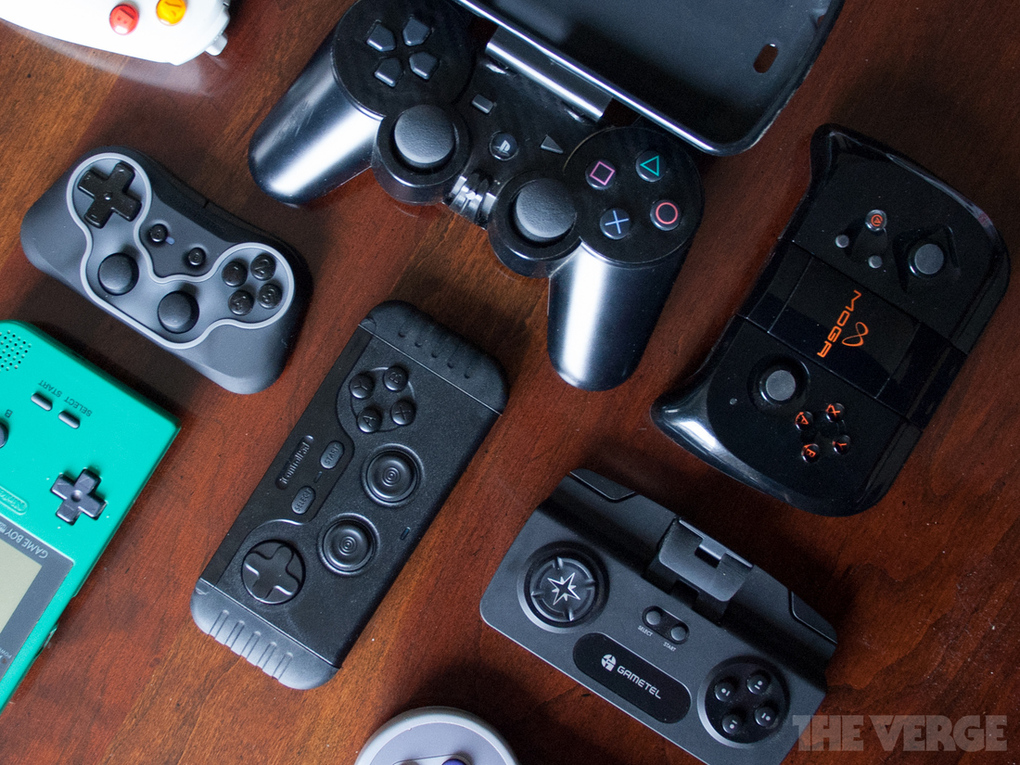
Humanity has accumulated sufficient user experience to intuitively understand button interfaces. The time has come when the button has grown into something more than just a “protruding piece of plastic.”
This new button quality has helped move to the next era.
Before that, the buttons were physical objects. In 1984, Macintosh introduced to the world the idea that the buttons can be virtual:
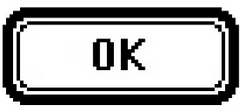
But virtual buttons still need physical buttons. To click on "OK", the user must use the mouse button.
However, the concept was so innovative that Apple had to teach people how to use it. They bought 39 advertising pages of the Newsweek weekly in order to publish the instructions.
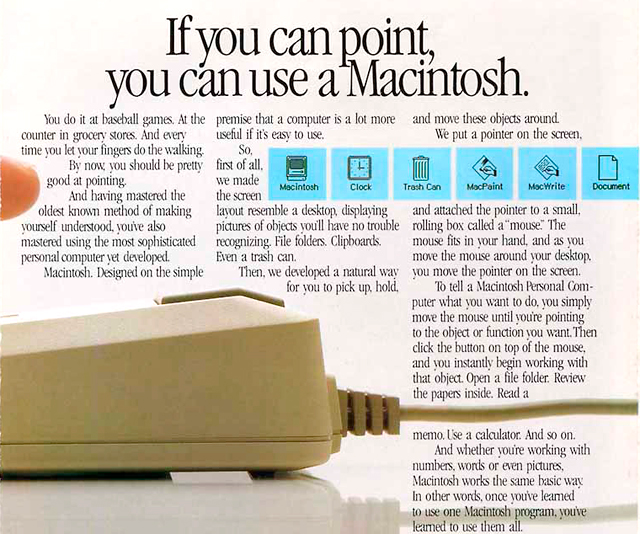
Together with the advent of computer interfaces, and then the Internet, another metamorphosis occurred with the buttons:
On the Web, a “button” can be anything. And this does not need to have a special form - visually they can be, for example, underlined text. Or image. For example, a couple of pictures for comparison - on the first frame “the site as it is”, on the second, only the interactive part of it:

User experience, coupled with a proven system of designations on the web, helps to intuitively understand where to place a site to click to get a result. A whole profession is emerging - a user interface designer (UI designer), who must have analyst skills, and besides this, be able to “predict” which interface variant will be most convenient for the user in this case.
The next step in the evolution of buttons was quite natural: a completely new type of interface appeared, which did not require a “middleman” between the user's finger and the button.
Touchscreens were relatively recently on the verge of science fiction. But technology has rapidly penetrated into our lives: first on the screens of various terminals, then on the displays of mobile devices and portable computers.

So what era are we living in now? Let's summarize. Buttons are no longer needed:

At the same time, what properties do we prescribe to buttons? Consciously or at the subconscious level:
Now we think of objects not as static things, but as objects with depth and duration in time . We are approaching the era when everything will be interactive .
The evolution of interfaces (with a look into the future) can be represented as follows: The era of the lever → The era of the button → The era of the “surface” → The era of the dynamic interface. The last is not far off, the first swallows are already there.

Today's children instantly learn to use the same iPad, because its technology does not use any "intermediate" controllers. And the result of each action is easy to predict intuitively.

Imagine a generation that grew up in an era when touch-surfaces and widespread interactivity are everyday things. Imagine how qualitatively their consciousness changes, in comparison with ours.
And try to guess - what technology of interaction and what interface will they offer to the world?
The button has a history of 100 years long: from the mechanical era to the era of electronics and computer technology. This is one of the most significant inventions of the XX-th century.
The basis of today's story served as a wonderful presentation of Bill DeRouchey. Thanks to him for his great research work.
In other words, today we will talk about how we came from this - to this:

')
We will also talk about how buttons have changed our understanding of this world. You have no idea how strong this influence was: the buttons changed the very paradigm of our thinking.
The simplest action
You got out of the car, put it on the alarm, sent sms on the way. They dialed the number of their apartment on the intercom, went into the elevator, went up to their floor, went home. Lit the lights in the hallway, got to the kitchen, put the kettle on to boil, turned on the computer. All this took you 1 minute. You have pressed a variety of buttons at least 10 times.
Buttons give us the ability to simply run complex processes. In one thesis on philosophy, there was a downright frightening definition:
“A piece of plastic on the surface, familiar to us from children's toys, has the power over simple things that transcend human physical strength.”

You and I live in an era of total transition from the relief "push-button" era to the era of "surfaces." Everything becomes flat, sensitive to touch, appealing to intuition, accumulated experience of communication with button interfaces. To that same user experience ( User Experience , aka UX).

But the button era also had a predecessor era. Let's call it the "era of leverage." Consider the past - to better understand the present.
The era of leverage. Mechanical
Humanity is essentially a herd of intelligent primates. We have always used the objects of the world to enhance with their own capabilities. So the bone turned into a shovel, a stick into a rake, and steel into mechanisms.

For example, a pistol can be simply described as a mechanism that at the touch of a button throws a small “stone” with high speed and accuracy. And throws out much more efficiently than if a man were thrown by hand ammunition. The piano keys are nothing more than buttons that trigger hammers on the strings.

The peculiarity of the mechanical epoch was that one could see the entire sequence of interactions: how one process starts the second, enhancing the original action, and so on, from initiation to the final result.
- Lever enhances movement. The lever is a symbol of the mechanical age.

What really changed these technologies was how we began to perceive the world. Reality has ceased to be perceived as something static - with the advent of the technologies of the mechanical age, humanity has gained power over time and distance.

Before we talked about the lever. The lever carries the meaning of amplification: if at the beginning of the “chain” a person pushes the lever, then at the end of this chain there is a push — reinforced by gears, belts, blocks and other mechanisms. In the case of the button, everything is different: at the beginning of the chain, a slight pressure occurs, at the end - whatever.
A simple example with a light bulb: you press a switch, but pressing does not increase the brightness of the light, as if it happened with the logic of the lever mechanism. The technology of abstract interaction has opened a new way of understanding the world. Abstraction is a feature of the next-gen era.
The era of the button. Electronic
What was the first button? This is a button on a flashlight - it was this device that brought the button into everyday life and along the way made a revolution in people's understanding of electric light. 1899th year.

George Eastman of Kodak contributed to the introduction of cameras into the lives of ordinary people. The slogan of the camera was the unforgettable "You press a button, we do the rest." Thus, the word “button” was equated with the word “simplicity”.

It was at the beginning of the twentieth century (namely, in 1900, the year) push-button doorbells ousted their rope counterparts. With the spread of electricity in 1910, push-button switches began to appear in homes. Cartoons of the gloomy world of the future appear in newspapers: a lazy man sits in a chair surrounded by buttons for all occasions. Well, according to the then ideas about the future, of course.

Link to the video mentioned on the slide . He is still sci-fi
The next revolutionary technical novelty was radio (1920). By 1938, 30 million radio receivers were sold (attention). It was a real “Internet boom” of the beginning of the last century.

But to tune in to your favorite radio station, the average person had to be “a little bit learned”. That was until 1938, when the buttons first appeared on the radio. This was the first in the history of the “save” use case. You could save the found station to a button and then call it with a single click.
- Buttons personified the future
In the years of the world economic crisis (1939), people dreamed of a better life. The 1940 film Leave it to Roll-Oh perfectly illustrates the concept of an imaginary future with its attribute: a domestic servant robot (who can even fix the stove!). You can control the robot using the keypad.
The thought of the future does not stand still; in 1957 Monsanto House of the Future opens in Disneyland, stuffed with automation, plastic and, of course, buttons!
But not only futurists dreamed of buttons. Marketing also did not sleep.
- Buttons personified luxury
In the fifties, push-button technology spread to many consumer goods, including a new luxury item for the middle class — the automobile. The phrase “pushbutton” has become an adjective, standing in the same row with words such as “modern”, “luxurious”, “advanced”, “new”, “simple”, etc.
Everything that started from the button automatically acquired the status of "premium". Here, for example, an oven, a washing machine and a canned food opener - for hostesses of the same era:

The slogan of the era: "so easy that even a woman can do it."
Before the buttons there was a technological gulf between the then “geeks” and ordinary people. Now everyone could use any complicated device - after all, it only needed to press a button.
The pushbutton advertising technique cannot be called the most elegant, but it is still used today. Only now he has migrated to web sites - remember that countless "all you have to do is press a button."

The first remote control also appeared in the “push-button” era, in 1956. People can control technology from a distance and without wires!

But associations with the future and luxury are not all.
- Buttons personified fear
After the Second World War, the arms race began. The threat of nuclear annihilation seemed just as easy as pressing a little. Remember the catch phrase from the BBC: "Who has the finger on the nuclear button?".
The famous film of 1951, teaching children safety in a nuclear explosion - "Duck and Cover"
- Buttons personified controls
At the same time, engineers built complex computers of impressive size, with rows of buttons. Only a few specialists could work with such machines using a special professional language.

And the flip side: pressing the wrong button causes chaos, disaster.
But the button gradually acquires other characters.
- Buttons personified the game
The Humpty Dumpty (1947) slot pinball machine is the first toy to use flippers, shovels toss a ball. For the first time, a player could interact with the ball and its environment using a complex mechanism. The control tool was, as you understand, all the same buttons.

So began a new history of games. In 1977 there was a second revolution in Igromir - with the advent of the Atari prefix. And, of course, the first push-button joystick - icons of a whole generation. Games came to the house.

The boom of arcades came in the 1970s. Gradually, the ability to deftly handle buttons became a valuable skill that spawned an entire industry:

Humanity has accumulated sufficient user experience to intuitively understand button interfaces. The time has come when the button has grown into something more than just a “protruding piece of plastic.”
- The button has become a metaphor
This new button quality has helped move to the next era.
The era of "surface." Electronic
Before that, the buttons were physical objects. In 1984, Macintosh introduced to the world the idea that the buttons can be virtual:

But virtual buttons still need physical buttons. To click on "OK", the user must use the mouse button.
However, the concept was so innovative that Apple had to teach people how to use it. They bought 39 advertising pages of the Newsweek weekly in order to publish the instructions.

Together with the advent of computer interfaces, and then the Internet, another metamorphosis occurred with the buttons:
- Button lost shape
On the Web, a “button” can be anything. And this does not need to have a special form - visually they can be, for example, underlined text. Or image. For example, a couple of pictures for comparison - on the first frame “the site as it is”, on the second, only the interactive part of it:

User experience, coupled with a proven system of designations on the web, helps to intuitively understand where to place a site to click to get a result. A whole profession is emerging - a user interface designer (UI designer), who must have analyst skills, and besides this, be able to “predict” which interface variant will be most convenient for the user in this case.
Vladimir Zavertaylov: In our studio, for example, two UI designers are now working at once. They analyze business needs, “project” them on modern web technologies and trends, add “zest”. As a result, UI-designers offer their integral vision of the user interface, its interactive and fully usable prototype. We discuss the options, select the optimal one and only after that proceed to the “expensive” stages of the project: design, layout, programming.
The next step in the evolution of buttons was quite natural: a completely new type of interface appeared, which did not require a “middleman” between the user's finger and the button.
- Virtual buttons become touch sensitive
Touchscreens were relatively recently on the verge of science fiction. But technology has rapidly penetrated into our lives: first on the screens of various terminals, then on the displays of mobile devices and portable computers.

So what era are we living in now? Let's summarize. Buttons are no longer needed:
- The form.
- Circuit.
- Volume
- Words to refer to.
- Decorations.
- and so on.

At the same time, what properties do we prescribe to buttons? Consciously or at the subconscious level:
- Simplicity.
- Control.
- Magic.
- A game.
- Ease.
- Automation.
Now we think of objects not as static things, but as objects with depth and duration in time . We are approaching the era when everything will be interactive .
The evolution of interfaces (with a look into the future) can be represented as follows: The era of the lever → The era of the button → The era of the “surface” → The era of the dynamic interface. The last is not far off, the first swallows are already there.

Today's children instantly learn to use the same iPad, because its technology does not use any "intermediate" controllers. And the result of each action is easy to predict intuitively.

Imagine a generation that grew up in an era when touch-surfaces and widespread interactivity are everyday things. Imagine how qualitatively their consciousness changes, in comparison with ours.
And try to guess - what technology of interaction and what interface will they offer to the world?
Conclusion
The button has a history of 100 years long: from the mechanical era to the era of electronics and computer technology. This is one of the most significant inventions of the XX-th century.
The basis of today's story served as a wonderful presentation of Bill DeRouchey. Thanks to him for his great research work.
Source: https://habr.com/ru/post/207198/
All Articles